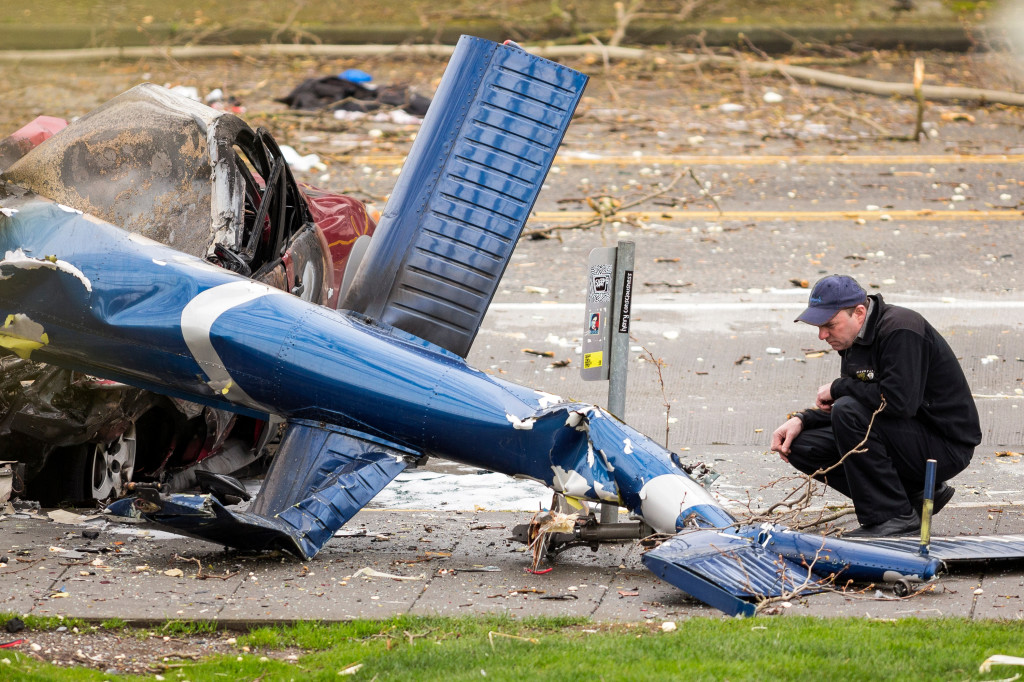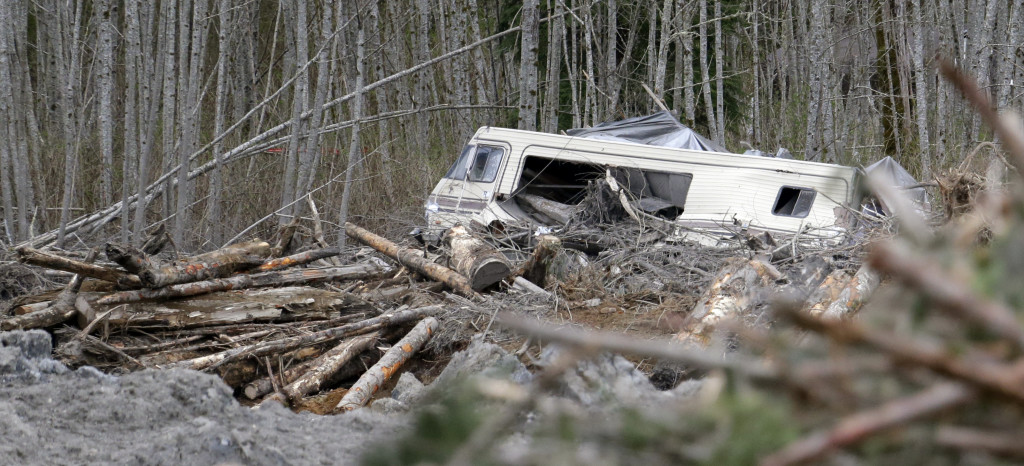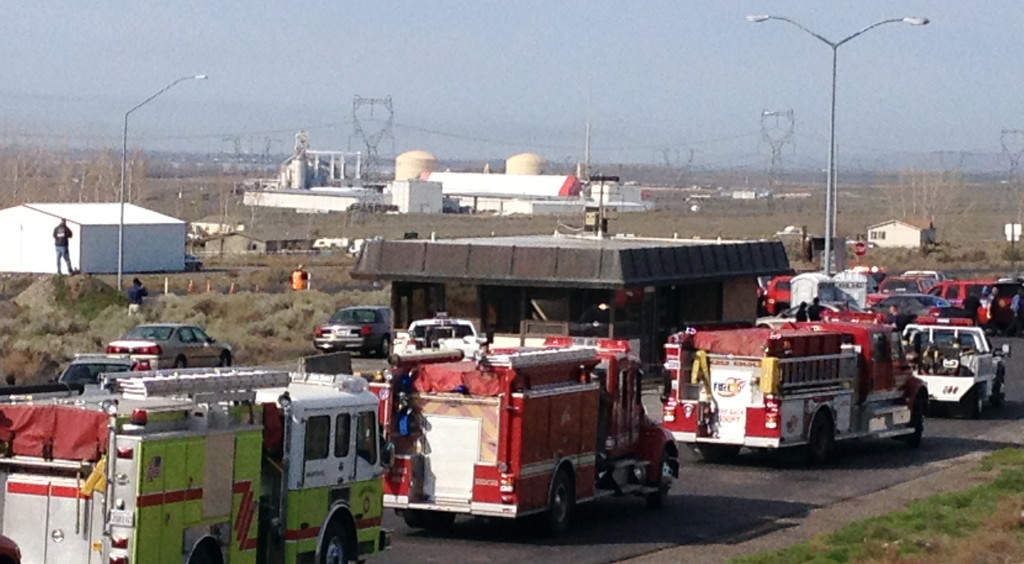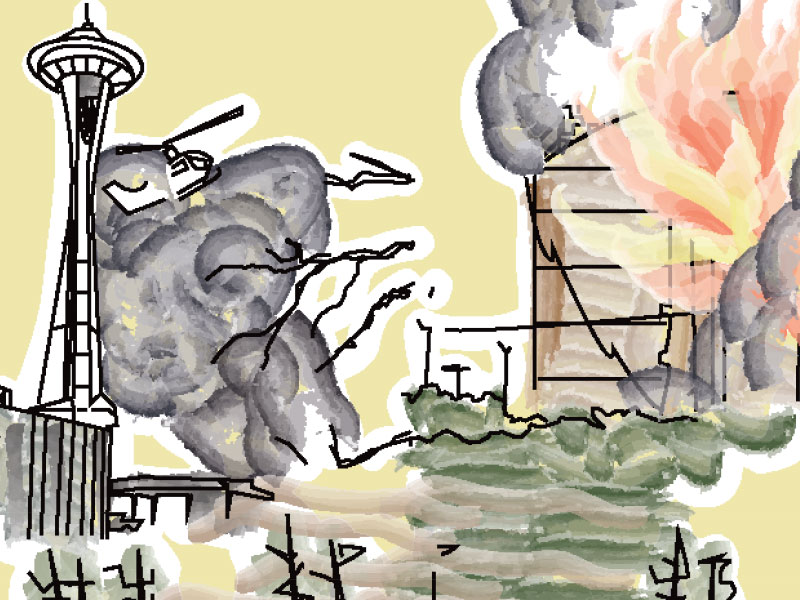March was a dismal month for many Washington State residents. In addition to the crash of a KOMO news helicopter on March 15, the state has suffered two other disasters (the devastating mudslide in Oso and an explosion at a natural gas plant near the Columbia river) all of which occurred within just weeks of one another.
The events were unrelated, but their chronological density only added to the despair. As April rolls forward, the state is still struggling to heal. Growing body counts out of Oso still dominate the area news cycle as President Obama plans to visit the area later this month to remember the victims and close a particularly painful chapter in Washington state’s history.
KOMO COPTER CRASH
On March 15, a Seattle photojournalist and pilot were killed when a KOMO-TV helicopter crashed into the street near the Space Needle. The crash reportedly took place shortly after the helicopter took off from its helipad. According to The Seattle Times, “the National Transportation Safety Board’s preliminary report says the helicopter began rotating counterclockwise during takeoff, making a full 360-degree revolution as it rose slightly before it pitched forward in a ‘nose-low attitude.’” The helicopter then proceeded to plummet onto the street and into a car, injuring the driver.

An investigator looks over the aftermath of a news helicopter crash Tuesday, March 18, 2014, in Seattle, Wash. A KOMO-TV helicopter crashed into a city street near Seattle’s Space Needle, killing two people and critically injuring a person in a car on the ground.
KOMO identified the deceased as longtime station photojournalist Bill Strothman, 62, of Bothell, and pilot Gary Pfitzner, 59, of Issaquah. Both men worked for the aircraft’s Illinois- based contractor. The cause of death for both men was blunt force trauma sustained during the crash.
The injured driver was identified as Richard Newman, 38, of Seattle. Susan Gregg, a hospital spokesperson, spoke with the Times and reported that “Newman was taken to Harborview Medical Center with second- and third-degree burns on up to 20 percent of his body and cuts and bruises to his face.” According to eyewitness reports, Newman was set ablaze by a river of fuel that ran about a block away from the crash.
Firefighters who responded to the crash were met with, “a black wall of smoke.” Seattle Fire Department spokesman Kyle Moore told seattlepi.com, “[The firemen] couldn’t tell that a helicopter was involved until they knocked down the fire with water.”
A cause for the crash has yet to be identified, according to Dennis Hogenson, acting deputy chief of The National Transportation Safety Board’s Western Pacific Region.
“Investigators are studying a range of potential factors, including weather conditions, the helicopter’s components and maintenance records, and what the pilot was doing in the hours before the crash.”
MUDSLIDES IN OSO
On March 19, a mudslide slammed into six homes, killing at least 33 people near the Snohomish County town of Oso. The slide also flowed over a portion of Highway 530 and into the Stillaguamish River, which is now partially dammed by debris. The Huffington Post reported on Monday that all but three of the confirmed dead have been identified.

A demolished recreational vehicle lies near the edge of a debris field at the scene of a deadly mudslide, Thursday, April 3, 2014, in Oso, Wash. More than a dozen people are listed as missing and 30 bodies have been found in debris from the March 22 landslide that broke off a steep hill, roared across the North Fork of the Stillaguamish River and buried a community at Oso, about 55 miles north of Seattle.
While several people were pulled from the immediate mudslide, the search and rescue missions have since been relatively fruitless. Still, hundreds of searchers, including local volunteers and trained dogs continue to scour the wreckage for survivors. Governor Jay Inslee said Sunday afternoon that he is not yet ready to give up hope of uncovering survivors.
Most recently, Billy Spillers, 30, of Arlington has been identified as one member of the deceased. Spillers, was a Navy petty officer who lived with his wife, Jonielle, and their four children. While his wife and four-year old son survived (Jonielle was at work and their son was rescued by helicopter), the Associated Press reported that “Spillers’ daughter Kaylee, 5, and stepson Jovon Mangual, 13, have been identified among the dead. Two-year-old daughter Brooke is listed among the missing.”
The slide reportedly leveled at least 34 houses and the debris field is said to stretch for over one square mile.
The slide has affected everyone in the Oso community. Thus far, 220 people have registered with the Federal Emergency Management Agency, seeking individual assistance FEMA spokesman David Mace reported Monday while announcing the opening of three disaster recovery centers for slide victims.
The slide may have been the result of negligence on the part of the State Department of Natural Resources (DNR) which “used outdated boundaries to restrict logging above the Snohomish County slope that collapsed, failing to incorporate newer research that would have protected land later clear-cut,” according to a Seattle Times analysis. Because trees soak up water and provide root systems that support the soil, the clear cut may well have contributed to the slide.
A report published in 1997 by geologist Daniel Miller and hydrologist Joan Sias drew new boundaries for where groundwater could feed into the slope and increase the risks of landslide. According to The Seattle Times, “Instead of adopting Miller’s map, DNR used boundaries that had been drawn up in 1988.” Because of this, in 2004, DNR approved the clear-cutting of 7.5 acres—roughly five of which would have been protected under Miller’s boundaries. Speculation allows that this may have contributed to the slide.
Currently, the Army Corps of Engineers is working on a berm — a big rock and gravel barrier that will aid in the draining of water from the area to make search and rescue easier. The berm is set to be completed in a week.
GAS PLANT EXPLOSION
Five workers were injured on March 31, during an explosion at the Williams Northwest Pipeline facility on the Columbia River. The blast resulted in the evacuation of some 400 civilians along the Washington-Oregon border. It is reported that the explosion sparked a fire and punctured one of the facility’s two giant storage tanks for liquefied natural gas.

A line of emergency vehicles line a roadway in sight of the Williams Northwest Pipeline plant in the distance, Monday, March 31, 2014, in Plymouth, Wash. Company spokeswoman Michele Swaner says all employees were evacuated and accounted for after an explosion Monday morning at the plant, where liquefied natural gas is converted into vapor. She says one employee was burned but will recover.
According to Benton County Sheriff Steven Keane “a relatively small amount of gas leaked from the tank to the ground in a moat-like containment area. Then [the mushroom cloud] evaporated, blowing away to the northeast… I think if one of those huge tanks had exploded, it might have been a different story.”
Still, the explosion was felt by people living up to six miles away from the plant. Cindi Stefani, who lives a mile away from the plant, told the AP that she heard “a very loud boom…I looked across the river and saw a giant mushroom cloud and flames at least a couple hundred feet high.”
Animals from neighboring farms were running around as well, Stefani said. “At that point we were pretty scared. I was thinking, ‘We need to get out of here.’ ”
Further, thinkprogress.org reported that the fumes from the explosion made emergency responders feel ill.
Williams Northwest Pipeline has shut down the pipeline and left it alone in hopes that the gas will evaporate, and that nothing ignites the fuel. While an explosion of the 1.2 cubic feet of natural gas in the container would be catastrophic, the AP reported “the venting of that large a container of natural gas would be equal to the annual greenhouse gas emissions from 1.3 million passenger vehicles.”
Four of the five injured workers were taken to Good Shepherd Medical Center in Hermiston, Ore., and the forth was brought to a Portland hospital specializing in burns. None of the injuries are reported to be life threatening.
There was no pipeline rupture and no customers were affected. A pipeline engineer with the Washington Utilities and Transportation Commission is investigating the incident.
MOVING FORWARD
While investigation into most of the depressing events of March is still ongoing, more information should be available by the end of the year. Whether or not any group can be held responsible however, remains to be seen. Said freshman Rachel Wong, “I think at this point what the state should focus on is healing. It was a difficult month, and my thoughts go out to the families of those who were affected.”
The thoughts and prayers of The Spectator’s staff are with the victims of all of these unfortunate disasters.
Will may be reached at [email protected]











